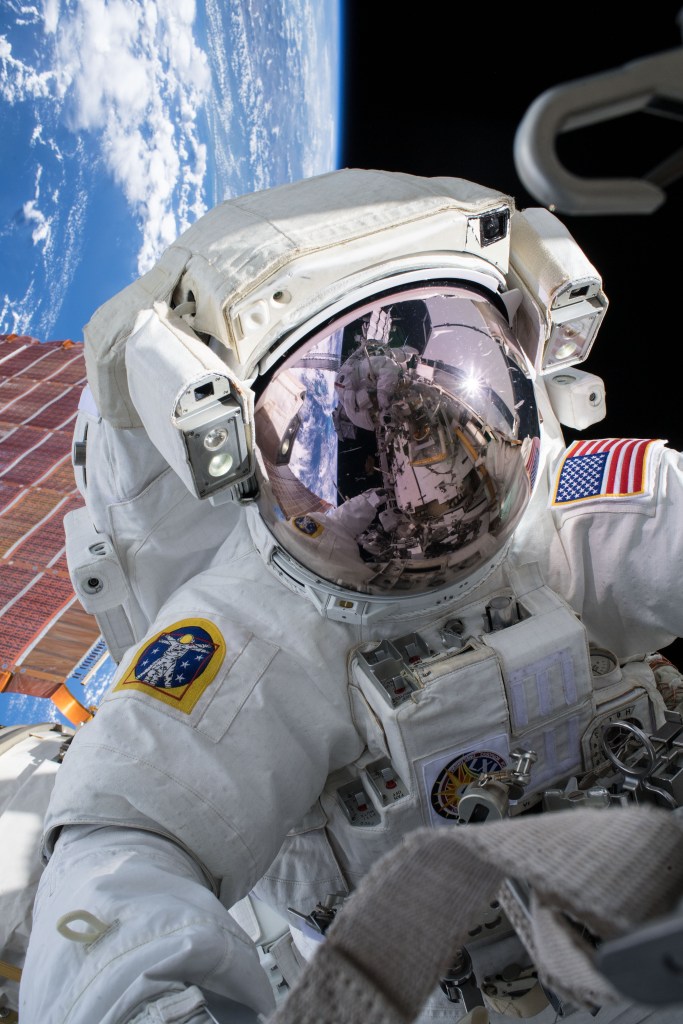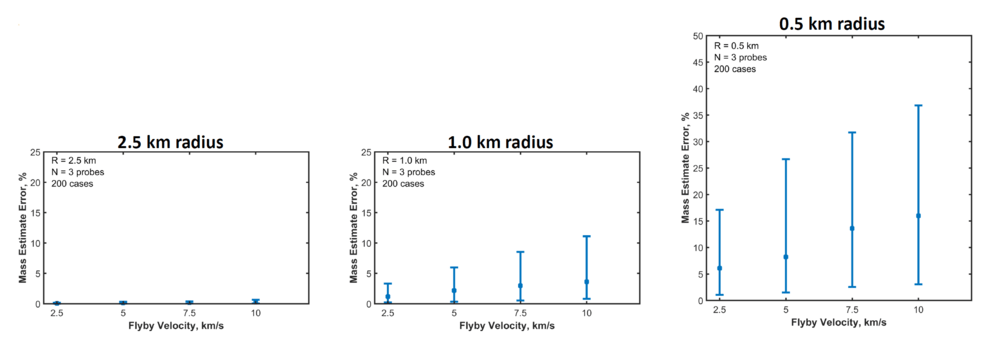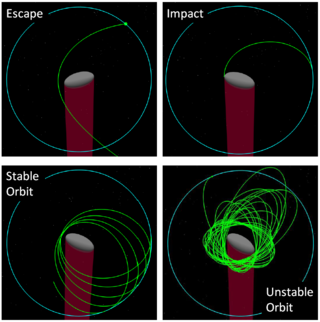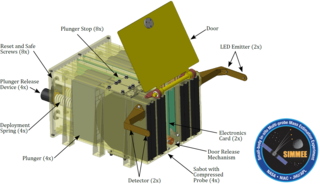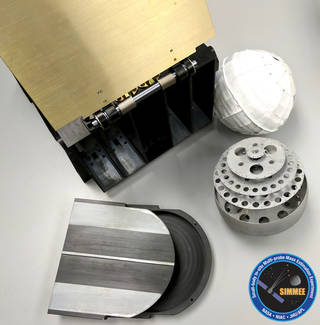Justin A. Atchison
Johns Hopkins University
Swarm Flyby Gravimetry is a concept to determine the mass of asteroid or comets during flyby using a collection of small, disposable tracking targets called probes. The probes are deployed from a spacecraft and tracked as they pass near to the small body. By measuring the deflection in each probe’s motion, we can achieve a very sensitive mass asteroid measurement, exceeding current capabilities by roughly an order of magnitude.
This approach offers a high accuracy mass measurement for a variety of reasons:
- The probes can pass very close to the asteroid’s surface, where they experience a much higher acceleration than the host spacecraft.
- The measurements of the probes’ locations relative to the host spacecraft are accurate because the tracking range is within 100’s or 1000’s of kilometers. Traditional methods use tracking from Earth, where the spacecraft is typically millions to hundreds of millions of kilometers away.
- The location of the probes flyby can be tailored to maximize the measurable deflection. This can be limited in traditional approaches.
- Finally, many probes can be deployed to obtain sets of independent measurements, which enable cross-validation of the results.
Throughout this research, we have evaluated a suite of possible tracking methods to enable this mass measurement, including optical imagers, radiofrequency (RF) beacons and receivers, and active radar or lidar. The most near-term, lowest risk approach is to use an optical imager on-board the host spacecraft. We call this approach Optical Gravimetry, or OpGrav. From sets of images, we can record the angular locations of the probes with respect to the stars throughout the encounter. These angular measurements are ingested into an optimal estimation tool that statistically infers the small body’s mass.
We use simulations to characterize the performance of this concept under different conditions. As an example, we developed a hypothetical trajectory that passes by an asteroid in an orbit similar to Eros. For this flyby scenario, we simulated varying speeds of the spacecraft and sizes of the asteroid. We also varied the deployment characteristics to represent practical limitations of targeting, pointing, and pre-flyby asteroid knowledge. The figures below show the results of these simulations, where 3 probes are deployed and tracked with an optical imager. In this case, we modeled the long-range imager that is flying on the New Horizons spacecraft.
Each bar is associated with 200 simulations of the same flyby scenario, but with a randomly drawn deployment profile. The bottom, middle, and top of each bar is associated with the 10th, 50th, and 90th percentile results. That is, the top of the bar corresponds to the performance that was achieved by at least 90% of the simulated cases. Here, performance is defined as the percent error of the result provided by simulated measurements after being processed by the OpGrav algorithms. Each bar gives the results for a selection of flyby velocity and asteroid radius. For asteroids with radii of 2.5 km, the simulations suggest that OpGrav would enable us to determine the mass of the asteroid to within 1% of the true value. For smaller asteroids, the deployment randomness becomes more important. Specifically, it’s important that at least one of the probes passes near to the asteroid. For asteroids as small as 500 meters in radius, the performance is very dependent on the deployment case, with accuracy results varying between a few percent up to 40 percent.
We also are studying the use of OpGrav in the context of a small body rendezvous. Preliminary simulations indicate that the test-masses can give very sensitive mass distribution measurements as compared to Earth-based Doppler only tracking. This would have implications for the speed and quality of gravity field estimation of the body, which reduces spacecraft risk and operations timelines. The figure below shows four simulated concepts for how one might deploy a probe while in a distant orbit around a rotating elongated asteroid.
To characterize the true hardware deployment accuracy, we’re actively developing and testing a prototype implementation of OpGrav called the Small Body In-Situ Multi-Probe Mass Estimation Experiment (SIMMEE). SIMMEE consists of a dispenser, a set of probes, and a mechanism for measuring each deployed probe’s velocity and timing. The probes are 12 cm in diameter and compress down into a puck shape for efficient storage during flight. They’re spherical and white to ensure that they can be predictably tracked for any orientation and lighting condition. The spherical shape also helps minimize uncertainty associated with solar radiation pressure.
The current SIMMEE prototype is undergoing environmental and functional testing at JHU/APL to prove out the ability to accurately target flyby points.
OpGrav is an active project and is being developed as an instrument for deep space missions. We’re seeking mission partners to continue development and eventually deliver the most sensitive flyby mass measurement to date. To get the latest updates, please contact:
Justin Atchison
The Johns Hopkins University Applied Physics Laboratory
Justin.Atchison@jhuapl.edu
Selected Publications:
R. H. Mitch, J. A. Atchison, A. S. Rivkin, “OpGrav – Implications for Planetary Defense”, Planetary Defense Conference, Tokyo, Japan, 2017.
R.H. Mitch, J. A. Atchison, A. S. Rivkin, “Simulated OpGrav Performance in a Main-Belt Asteroid Tour”, Asteroids, Comets, Meteors, Montevideo, Uraguay, 2017.
J. A. Atchison, R. H. Mitch, and E. H. Mazarico, “Optical Gravimetry for Flyby Missions: Parametric Study and Validation” Lunar and Planetary Science Conference, The Woodlands, TX, 2017.
J. A. Atchison, R. H .Mitch, C. Apland, C. L. Kee, K. W. Harclerode, “Small-Body In-Situ Multi-Probe Mass Estimation Experiment (SIMMEE)”, IEEE Aerospace Conference, Big Sky, MT, 2017.
J. A. Atchison, R. H .Mitch, C. Apland, C. L. Kee, “Small-Body In-Situ Multi-Probe Mass Estimation Experiment (SIMMEE)”, Instruments for Planetary Missions, #4058, Pasadena CA, 2016.
J. A. Atchison and R. H. Mitch, “Asteroid Flyby Gravimetry via Target Tracking,” AAS SpaceFlight Mechanics Conference, Williamsburg VA, AAS-15-466, 2015. (Link: file: OpGrav_AAS_2015.pdf)
























